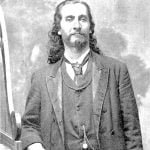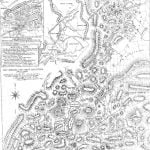
The report on the condition of the Eastern Band of Cherokees of southwestern North Carolina in 1890, with incidental mention of the Eastern Cherokees, shows that this band of Indians, with very little if any care or attention on the part of the national government, has become self-sustaining and self-reliant, and that the members thereof have developed into good citizens of the United States and the state of North Carolina. While nominally a tribe or band, so incorporated for certain purposes, with a chief and a council, these Indians are in fact as truly citizens of North Carolina as are any people within the borders of the state. They have never been considered reservation Indians, and therefore the Indian policy of the United States has not been applied to them. There is a United States Indian agent among them, who is a member of the band, as many of his predecessors have been. His duties are nominal, and his salary is $800 per year.
The different censuses show the Eastern Cherokees in North Carolina to be increasing in number In. 1850, when they were in Haywood county, they numbered 710; in 1890, still residing in the same locality, they are returned as numbering 1,520. In 1860, 1870, and 1880 they were enumerated as part of the population of the state.
The Eastern Band of Cherokees is now a body politic and corporate under the name, style, and title of The Eastern Band of Cherokee Indians, with all the rights, privileges, franchises, and powers incident and belonging to corporations under the laws of the state of North Carolina, The band was incorporated by the general assembly of North Carolina March 11, 1889. (Laws of North Carolina, 1889, chapter 211, page 889.)
The Eastern Band of Cherokees of North Carolina, 1,520 in number, reside on lands in portions of Cherokee, Graham, Jackson, and Swain counties, in southwestern North Carolina. There is no reservation, but the tract occupied by these Indians, known as the Qualla boundary, contains about 65,000 acres, and is held in fee by the Eastern Band of Cherokees and the Eastern Cherokees once resident of this region, but who removed west, and are now one of the Five Civilized Tribes, occupying lands in Indian Territory.
These Indians, although many are full-blood Cherokees, are citizens of the United States and are voters and taxpayers in North Carolina. They are Indians taxed, and are classed as enterprising, moral, and law-abiding. They are almost entirely self-supporting, receiving only a small allowance from the United States for educational purposes.

Farming, lumbering, and clay labor are the chief occupations of these Indians, but some few mechanics are found among them. Many of them hire out as farmers and laborers. They have a written language, and while in many respects are progressive, seeking the knowledge best suited to their present condition, still they preserve some traditions and customs of their old Indian life. The Indian farming tracts are small, as will be seen by the map.
The total number of Eastern Cherokees in 1890 is given as 2,885. Of this number 1,520 live in North Carolina, and are known as the Eastern Band of Cherokees of North Carolina; 936 are said to live in Georgia, 318 in Tennessee, and 111 in Alabama. In 1884 the number in North Carolina was given as 1,881. Since 1884 some of this band have moved into adjoining states and others have joined the Cherokees in Indian Territory. The few living in Kentucky, Virginia, and other states have become incorporated into the white population.
The economic and social condition of the Eastern Cherokees residing in Alabama, Georgia, and Tennessee is about the same as of those residing in North Carolina. They are entirely self-supporting and are citizens of the several states wherein they reside.
The Eastern Cherokees do not now receive any portion of the annuities given yearly to the Cherokees of Indian territory, the Supreme Court of the United States having decided that they were not entitled to participate in them. The Eastern Band of Cherokees of North Carolina receive only a small sum annually from the United States in aid of their schools.
In 1884 Hon. Hiram Price, Commissioner of Indian Affairs, in his annual report, mentioned the several censuses of the Eastern Cherokees, as follows: 1
In September 1882, Joseph G. Hester was appointed agent to take a census and make a list of all the Cherokee Indians residing east of the Mississippi river, as required by an act approved August 7, 1882. To assist him in this work I furnished him with copies of 4 previous lists of this people: one taken by J. C. Mullay as early as 1848, containing the names of all who resided in the state of North Carolina at the time of the treaty of 1830, and who had not removed west, and one taken by D. W. Siler in pursuance of an act approved September 30, 1850, which, it is believed, includes all of these people then residing in North Carolina, Georgia, Tennessee, and Alabama. This roll was used by Alfred Chapman, acting for this department, in the following year to make a per capita payment to the Eastern Cherokees, and in doing so he found it necessary from evidence presented to make a few changes, so that a copy of the pay roll made by him was also given to the agent, together with a copy of a list of these people taken by S. H. Swetland under an act approved July 27, 1868.
In consequence of the wide distribution of these Indians and their descendants over many states, a great majority living in localities remote from all usual routes of travel, the task proved to be of much greater magnitude, difficulty, and expense than was at first anticipated, and it was not until the 5th of last January that it could be completed and the list submitted. It contains the names of 1,881 members residing in North Carolina, 758 in Georgia, 213 in Tennessee, 71 in Alabama, 11 in Kentucky, 8 in New Jersey, 5 in Virginia, 3 each in Kansas (at present) and South Carolina, and 1 each in California, Colorado, and Illinois (at present), making a total membership of 2,956.
It gives the English and Indian names (when they have both), the age and sex of each, and the residence or post-office address of every family or single person, together with the relationship of each member of a family to the head thereof. Reference is also made to the numbers opposite their names or the names of their ancestors on the previous rolls above noted that they may be identified there, and there are such marginal references and explanatory notes as special MSS seemed to require. Thus, no person’s name was enrolled on this list whose name or the name of whose ancestor does not appear on some one of the previous lists, and all except 47 on the previous lists are accounted for, either as dead, or having gone west to reside with the nation in the Indian territory, or by enrollment as now residing east of the Mississippi River. These 47 persons, whose whereabouts could not be ascertained, are believed by their friends and relatives to have either died, gone west, or to be now known by different names from those under which they were previously enrolled. A list of the 47 names is given with this census. While the agent was engaged in the work various persons presented themselves to him, claiming to be Eastern Cherokees or their descendants, whom he declined to enroll, not believing the evidence they submitted sufficient to sustain their claims. He files with the census a list of their names, accompanied by all the papers and information he had received or could obtain in reference to them, which may be useful in case any of those so rejected in future claim that they have been wronged.
The census list, together with all evidence and information available pertaining to it, was laid before a council of the Eastern Cherokees at their request (due notice having been given to the Cherokee nation in the Indian territory to be present by delegates if they so desired), and after having been carefully scrutinized by said council was fully approved by them. A certificate signed by the council to that effect accompanies the list, which list, after having been carefully examined and compared with the previous rolls in this office, was, on my recommendation, approved by the department on the 4th of last February.
Citations:
- The Eastern Cherokees include those who are now known as the Eastern Band of Cherokees of North Carolina.[
]
